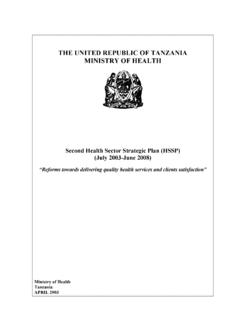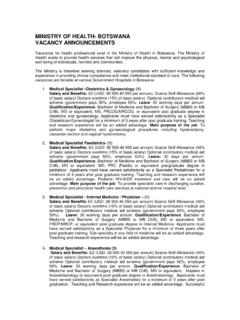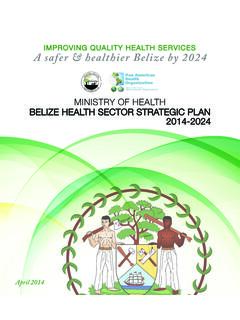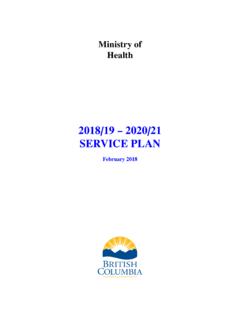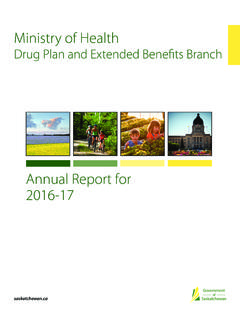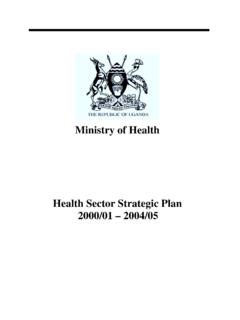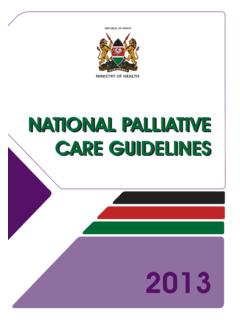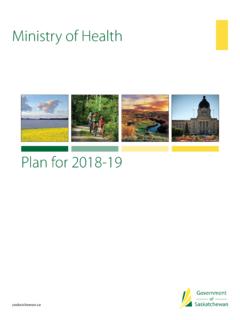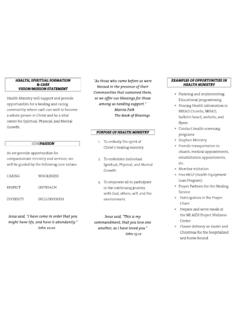Transcription of MINISTRY OF HEALTH UGANDA - The DHS Program
1 UGANDAM alaria IndicatorSurvey (MIS)2014-15 UGANDA 2014-15 Malaria Indicator Survey (MIS) MINISTRY OF HEALTH MINISTRY OF HEALTH THE REPUBLIC OF UGANDA UGANDA Malaria Indicator Survey 2014-15 UGANDA Bureau of Statistics Kampala, UGANDA National Malaria Control Programme UGANDA MINISTRY of HEALTH Kampala, UGANDA UGANDA Malaria Surveillance Project Molecular Laboratory Mulago Hospital Kampala, UGANDA ICF International Rockville, Maryland, USA October 2015 The 2014-15 UGANDA Malaria Indicator Survey (2014-15 UMIS) was implemented by the UGANDA Bureau of Statistics (UBOS) and the National Malaria Control Programme (NMCP) of the UGANDA MINISTRY of HEALTH from December 2014 to January 2015. The funding for the UMIS was provided by the United States Agency for International Development (USAID) and the United Kingdom Department for International Development (DFID). ICF International provided technical assistance as well as funding to the project through The DHS Program , a USAID-funded project providing support and technical assistance in the implementation of population and HEALTH surveys in countries worldwide.
2 Additional information about the 2014-15 UMIS may be obtained from the UGANDA Bureau of Statistics (UBOS), Plot 9 Colville Street, Box 7186, Kampala, UGANDA ; telephone: 256-414-706000; fax: 256-414-237553; e-mail: Internet: Information about The DHS Program may be obtained from ICF International, 530 Gaither Road, Suite 500, Rockville, MD 20850 USA; telephone: 301-407-6500; fax: 301-407-6501; e-mail: Internet: Recommended citation: UGANDA Bureau of Statistics (UBOS) and ICF International. 2015. UGANDA Malaria Indicator Survey 2014-15. Kampala, UGANDA , and Rockville, Maryland, USA: UBOS and ICF International. Contents iii CONTENTS TABLES AND FIGURES .. v FOREWORD .. vii ACKNOWLEDGMENTS ..ix PROGRESS PROGRESS ON MALARIA INDICATORS TO DATE ..xi MAP OF UGANDA .. xii 1 INTRODUCTION .. 1 Country Profile .. 1 Country Demographics .. 1 HEALTH System .. 1 Background on Malaria in UGANDA .
3 2 Malaria Transmission .. 2 Malaria Policy .. 2 Objectives of the UGANDA Malaria Indicator Survey .. 3 Methodology of the UGANDA Malaria Indicator Survey .. 3 Survey Organisation .. 4 Sample Design .. 4 Questionnaires .. 6 Anaemia and Malaria Testing .. 6 Training of Field Staff .. 8 Fieldwork .. 8 Data Processing .. 8 Response Rates .. 8 2 CHARACTERISTICS OF HOUSEHOLDS AND WOMEN .. 11 Household Environment .. 11 Drinking Water .. 11 Household Sanitation Facilities .. 13 Housing Characteristics .. 14 Household Possessions .. 15 Wealth Index .. 15 Population by Age and Sex .. 17 Household Composition .. 18 Characteristics of Women Respondents .. 18 General Characteristics .. 19 Educational Attainment of Women .. 19 Literacy of Women .. 20 3 MALARIA PREVENTION .. 23 Malaria Vector Control (Mosquito Nets and Indoor Residual Spraying).
4 23 Ownership of Mosquito Nets .. 24 Indoor Residual Spraying .. 26 Access to Mosquito Nets .. 28 Use of Mosquito Nets by Household Population .. 29 Use of Mosquito Nets by Children under Five .. 31 Use of Mosquito Nets by Pregnant Women .. 33 Intermittent Perventive Treatment of Malaria in Pregnancy (IPTp) .. 36 iv Contents 4 MANAGEMENT OF FEVER IN CHILDREN AND ANAEMIA AND MALARIA IN CHILDREN .. 41 Management of Fever in Children .. 41 Prevalence, Diagnosis, and Prompt Treatment of Children with Fever .. 41 Source of Advice or Treatment for Children with Fever .. 43 Community Medicine Distributers .. 43 Types of Antimalarial Drugs .. 45 Anaemia and Malaria Prevalence among Children .. 46 Prevalence of Severe Anaemia in Children .. 48 Prevalence of Malaria in Children .. 49 5 MALARIA KNOWLEDGE .. 53 Women s Knowledge of Malaria .. 53 Knowledge of Causes of Malaria .. 53 Knowledge of Ways to Avoid Malaria.
5 54 Knowledge of Medicines to Avoid Getting Malaria during Pregnancy .. 55 Knowledge of When a Child with Fever Should be Taken for Treatment .. 57 Exposure to Malaria Messages .. 58 REFERENCES .. 61 APPENDIX A SAMPLE DESIGN .. 63 Introduction .. 63 Sample Frame .. 63 Sample Design and Implementation .. 65 Sample Probabilities and Sample Weights .. 66 APPENDIX B ESTIMATES OF SAMPLING ERRORS .. 69 APPENDIX C DATA QUALITY TABLES .. 81 APPENDIX D SURVEY PERSONNEL .. 83 APPENDIX E QUESTIONNAIRES .. 87 Tables and Figures v TABLES AND FIGURES 1 INTRODUCTION .. 1 Table Selected human development indicators for UGANDA .. 1 Table Results of the household and individual interviews .. 9 2 CHARACTERISTICS OF HOUSEHOLDS AND WOMEN .. 11 Table Household drinking water .. 12 Table Household sanitation facilities .. 13 Table Household characteristics .. 14 Table Household possessions.
6 15 Table Wealth quintiles .. 16 Table Household population by age, sex, and residence .. 17 Table Household composition .. 18 Table Background characteristics of respondents .. 19 Table Educational attainment: Women .. 20 Table Literacy: Women .. 21 Figure Population pyramid .. 18 3 MALARIA PREVENTION .. 23 Table Household ownership of mosquito nets .. 24 Table Source of nets .. 26 Table Indoor residual spraying against mosquitoes .. 27 Table Access to an insecticide-treated net (ITN) .. 28 Table Use of mosquito nets by persons in the household .. 30 Table Use of mosquito nets by children .. 32 Table Use of mosquito nets by pregnant women .. 34 Table Reasons for not using mosquito net for sleeping .. 36 Table Use of existing ITNs .. 36 Table Antenatal care .. 37 Table Use of Intermittent Preventive Treatment (IPTp) by women during pregnancy .. 38 Figure Percentage of households with at least one ITN.
7 25 Figure Trends in ownership of ITNs: Percent of households with at least one ITN .. 25 Figure Percentage of the de facto population with access to an ITN in the household .. 29 Figure Ownership of, access to, and use of ITNs .. 31 Figure Percentage of children under age 5 who slept under an ITN the night before the survey .. 33 Figure Trends in use of ITNs .. 35 Figure Trends in use of IPTp .. 39 4 MANAGEMENT OF FEVER IN CHILDREN AND ANAEMIA AND MALARIA IN CHILDREN .. 41 Table Prevalence, diagnosis, and prompt treatment of children with fever .. 42 Table Source of advice or treatment for children with fever .. 43 Table Access to community workers .. 44 Table Type of antimalarial drugs used .. 45 Table Coverage of testing for anaemia and malaria in children (unweighted) .. 47 Table Prevalence of severe anaemia in children .. 48 vi Tables and Figures Table Prevalence of malaria in children .. 49 Table Malaria species.
8 52 Figure Malaria prevalence among children 0-59 months by age of the child, according to microscopy .. 50 Figure Malaria Prevalence among children 0-59 months by residence and region, according to microscopy .. 51 Figure Malaria prevalence among children 0-59 months by mother's education and wealth quintile, according to microscopy .. 51 5 MALARIA KNOWLEDGE .. 53 Table Knowledge of causes of malaria .. 54 Table Knowledge of ways to avoid malaria .. 55 Table Knowledge of medicines to avoid getting malaria during pregnancy .. 56 Table Knowledge of when a child with fever should be taken for treatment .. 57 Table Exposure to malaria messages .. 59 APPENDIX A SAMPLE DESIGN .. 63 Table Households .. 64 Table Enumeration areas and enumeration area size .. 65 Table Sample allocation of households and clusters: region and study domain .. 66 Table Sample allocation of households and clusters: sampling stratum.
9 66 Table Sample allocation of completed interviews with women 15-49 and of children under 5 tested for malaria .. 68 APPENDIX B ESTIMATES OF SAMPLING ERRORS .. 69 Table List of indicators for sampling errors, UGANDA 2014-15 .. 71 Table Sampling errors: Total sample, UGANDA 2014-15 .. 72 Table Sampling errors: Urban sample, UGANDA 2014-15 .. 72 Table Sampling errors: Rural sample, UGANDA 2014-15 .. 73 Table Sampling errors: Central 1 sample, UGANDA 2014-15 .. 73 Table Sampling errors: Central 2 sample, UGANDA 2014-15 .. 74 Table Sampling errors: East Central sample, UGANDA 2014-15 .. 74 Table Sampling errors: Kampala sample, UGANDA 2014-15 .. 75 Table Sampling errors: Mid North sample, UGANDA 2014-15 .. 75 Table Sampling errors: Mid Western sample, UGANDA 76 Table Sampling errors: Mid Eastern sample, UGANDA 2014-15 .. 76 Table Sampling errors: North East sample, UGANDA 2014-15 .. 77 Table Sampling errors: South Western sample, UGANDA 2014-15.
10 77 Table Sampling errors: West Nile sample, UGANDA 2014-15 .. 78 Table Sampling errors: Greater Kampala sample, UGANDA 2014-15 .. 78 Table Sampling errors: Karamoja region sample, UGANDA 2014-15 .. 79 Table Sampling errors: The 10 IRS districts sample, UGANDA 79 Table Sampling errors: The future 14 IRS districts sample, UGANDA 2014-15 .. 80 Table Sampling errors: The 10 highland districts sample, UGANDA 2014-15 .. 80 APPENDIX C DATA QUALITY TABLES .. 81 Table Household age distribution .. 81 Table Age distribution of eligible and interviewed women .. 82 Table Completeness of reporting .. 82 Foreword vii FOREWORD alaria remains one of the most important diseases in UGANDA , causing significant morbidity, mortality and negative socio- economic impact. For the past five years, major interventions have been undertaken as a part of the country s strategic planning effort to help bring malaria under control in UGANDA . The MINISTRY of HEALTH , in partnership with many of the stakeholders in the fight against malaria, has intensified efforts to increase access to and use of long-lasting insecticidal nets (LLINs), which are more durable and cost-effective than untreated nets.
![Kenya Demographic and Health Survey 2014 [FR308]](/cache/preview/8/1/e/d/8/8/e/0/thumb-81ed88e0200e50494b93b6f6e3131997.jpg)

![Pakistan Demographic and Health Survey 2012-13 [FR290]](/cache/preview/a/3/0/d/7/d/4/3/thumb-a30d7d433902a6b912858b3567e7005a.jpg)
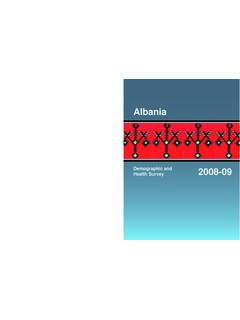
![Swaziland Demographic and Health Survey 2006-07 [FR202]](/cache/preview/e/9/6/6/b/1/5/2/thumb-e966b152d2377b66a5a36be0eaa2b17b.jpg)
![Ethiopia Demographic and Health Survey 2016 [FR328]](/cache/preview/b/4/6/c/8/f/a/7/thumb-b46c8fa7d3e1cb3435d90bf577845b98.jpg)
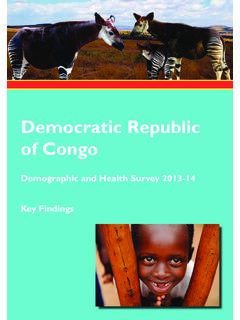


![Gender Equality and Women's Empowerment in India [OD57]](/cache/preview/0/7/f/d/9/7/1/6/thumb-07fd97166dd92c7359501888c42037d3.jpg)
